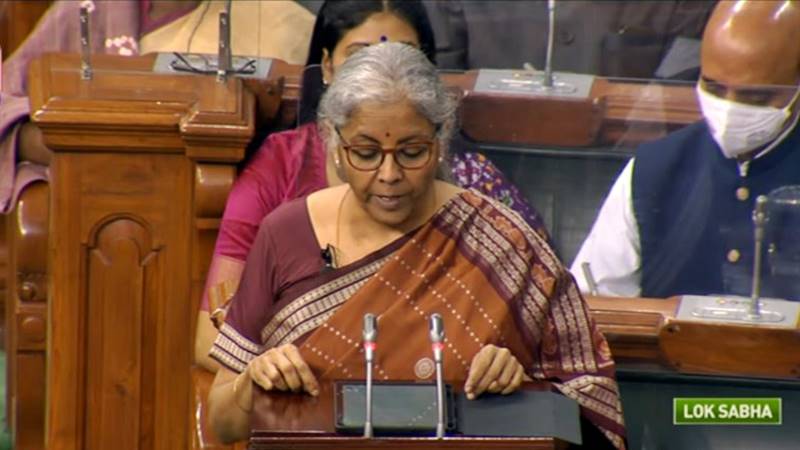Union Budget 2022: FM Sitharaman announces tele-mental health programme; 2 lakh anganwadis to be upgraded
A national tele-mental health programme will be launched for mental health counselling in India amid the pandemic. Union Finance Minister Nirmala Sitharaman announced to upgrade 200,000 anganwadi centres across the country.


Union Finance Minister Nirmala Sitharaman.
While presenting the Union Budget 2022, Finance Minister Nirmala Sitharaman has announced to launch a national tele-mental health programme for mental health counselling. Sitharaman pointed out that the COVID19 pandemic has accentuated mental health problems in people of all ages.
“To better the access to quality mental health counseling and care services, a National Tele Mental Health programme will be launched. This will include a network of 23 tele-mental health centres of excellence with Nimhans being the nodal centre and IIIT Bangalore providing technology support,” she announced during her Budget 2022 speech today, February 1.
Union Finance Minister has also announced to roll out an open platform for the National Digital Health Ecosystem. It will consist of digital registries of health providers and health facilities, unique health identity and universal access to health facilities.
Meanwhile, Sitharaman announced to upgrade 200,000 anganwadi centres across the country. “Our govt has comprehensively revamped schemes of the Ministry of Women and Child Development such as Mission Shakti, Mission Vatsalya, Saksham Anganwadi and Poshan 2.0. Saksham anganwadi have better infrastructure providing improved early childhood care; two lakh anganwadis will be upgraded under the scheme,” said Union Finance Minister. Last year, the government allocated Rs 20,105 crores for the Saksham scheme, which includes four programmes: ICDS, Poshan, creches, and scheme for adolescent girls.
Under anganwadi Services, a package of six services: supplementary nutrition; pre-school non-formal education; nutrition & health education; immunization; health check-up; and referral services, has been provided to all eligible beneficiaries, including children in the age group of 0-6 years, pregnant women and lactating mothers through the platform of anganwadi Centres across the country.
In India, 158 million kids are registered with the 1.36 million functional anganwadi centres spread across all the districts in the country (as of June 2018).
A recent Gaon Connection report shows how two years of the COVID19 pandemic has impacted nutrition schemes for millions of children in poll bound Uttar Pradesh that is home to highest number of malnourished children. However, much before it, anganwadis in several districts of Uttar Pradesh had stopped providing hot meals to beneficiaries, and had switched to dry rations.
A large chunk of funds meant to fight malnutrition has remained unutilised between 2017-18 and 2020-21. Uttar Pradesh is one of the worst performers in utilising funds allocated for the POSHAN (Prime Minister’s Overarching Scheme for Holistic Nutrition) mission. The state failed to utilise 66.27 per cent of its funds. Of the total Rs 5,696.896 million funds released by the central government to Uttar Pradesh between financial year 2017-18 and 2020-21, the state has utilised only Rs 1,921.928 million.

Meanwhile, Union Finance Minister lauded the country’s vaccination drive during her Budget 2022 speech. “We are in the middle of the Omicron wave, but the speed of our vaccination campaign has helped greatly. I am confident that via ‘Sabka Prayaas’, we’ll continue with strong growth,” said Sitharaman.
India having already faced two COVID19 waves, with the first peak in September 2020 and the second peak in May 2021, is currently facing the third wave led by the Omicron variant. Under the national COVID19 vaccination programme, the Indian government has provided free vaccines to its population.
As on February 1, 2022, a total of 1.66 billion doses of COVID19 vaccines have been administered: 943.6 million first dose and 711 million second dose. More than 70 per cent of vaccine doses have been administered at COVID vaccination centres located in rural areas, as per the Economic Survey 2021-22.

